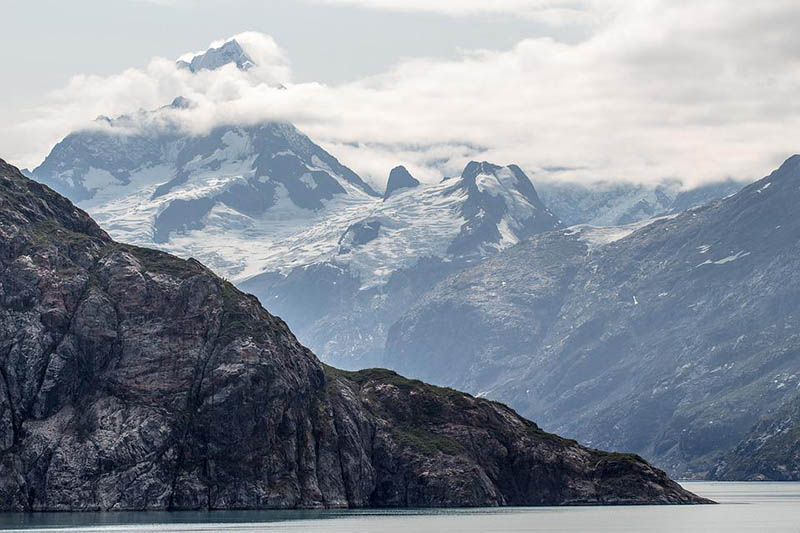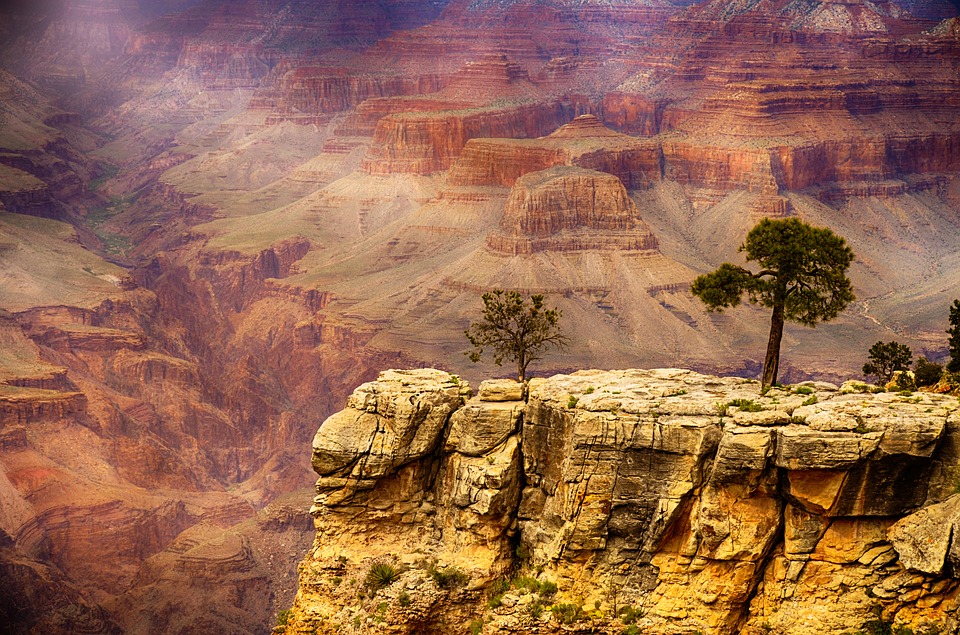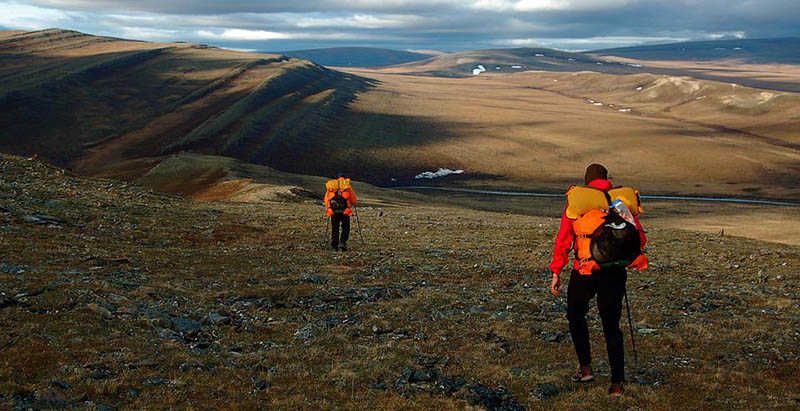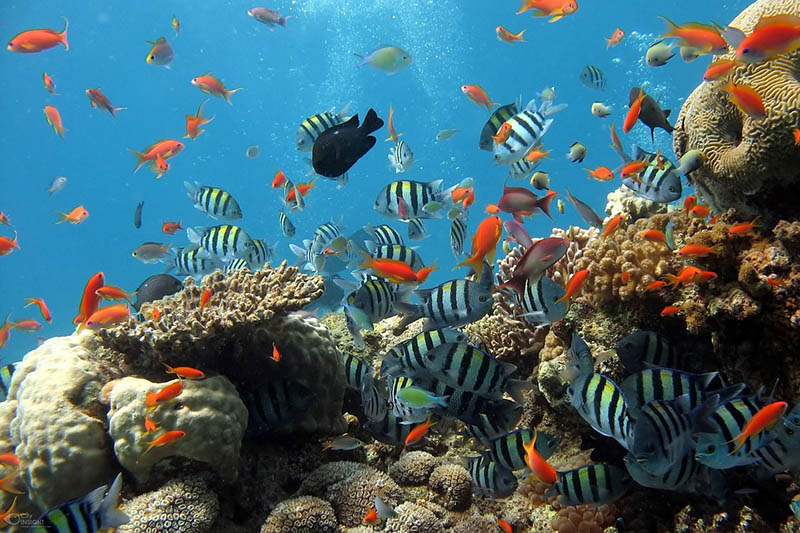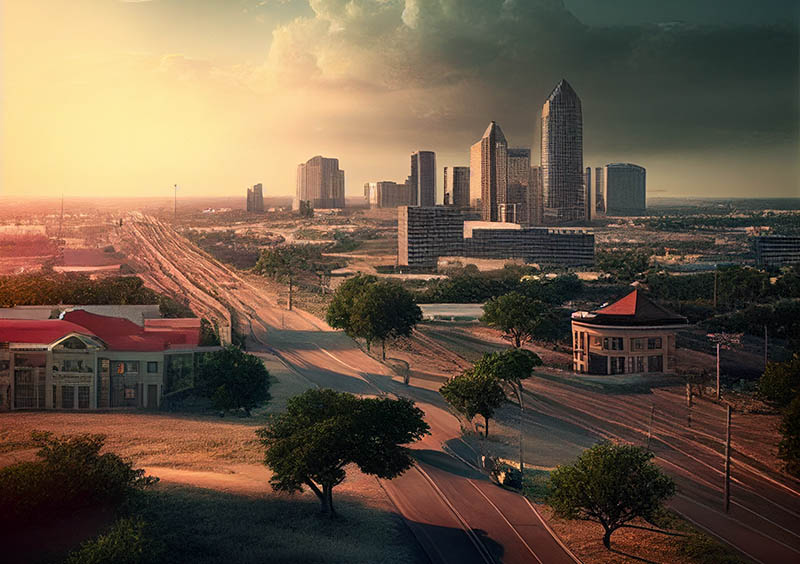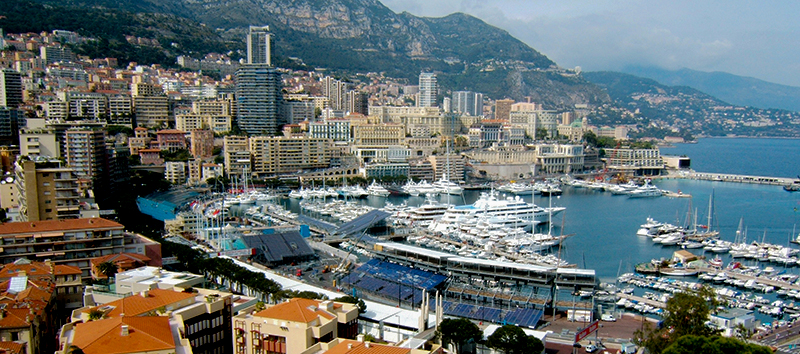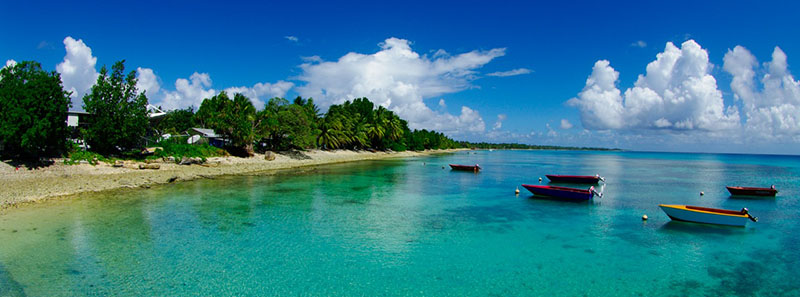Distant and mysterious Alaska holds many secrets. The gold rush that raged here in the past led to the rapid development of this state and largely determined its modern look.
Size and population
Alaska is the largest state in the US but at the same time one of the least densely populated. The population density here is one of the lowest in the world1.26/sq mi (0.49/km2). This is less than in Mongolia and Namibia, the least densely populated countries in the world. The area of this state is 663,268 sq miles (1717,854 sq km), but only about 750.000 people reside here. Alaska state ~is 420 times larger than Rhode Island, the smallest US state, with more than 1 million people living in Rhode Island.
Alaska used to belong to Russia
The first European to see the shores of this peninsula was the Russian explorer Semyon Dezhnev. This happened in 1648, and in 1732 a Russian expedition under the command of the surveyor Mikhail Gvozdev landed here. However, it was difficult for the Russian Empire to control such a remote region, and in 1867 Alaska was sold to the United States for $ 7.2 million. Back then, no one knew about the gold deposits here.
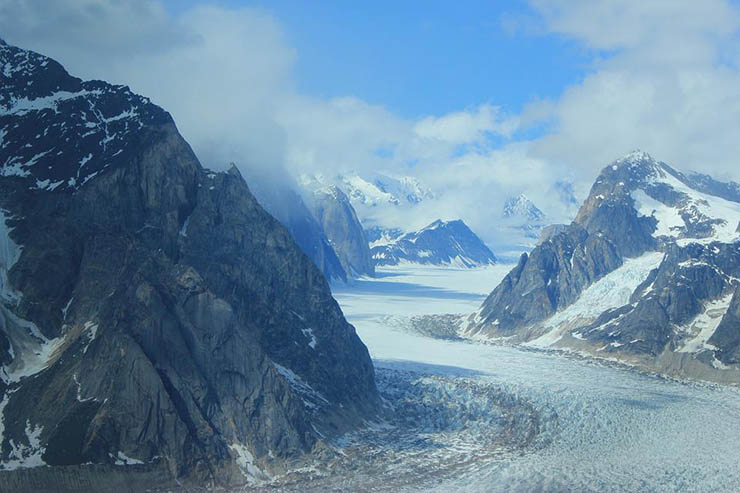
The gold rush
Alaska became famous all over the world after the gold rush began here. Anyone, even a foreign citizen, has the legal right to search for gold here. Even nowadays! However, even during the gold rush, only 1 out of 200 gold miners got rich. Moreover, it was mostly not the gold diggers who enriched themselves, but businessmen who supplied them with food and equipment at super high prices.
Valley of Ten Thousand Smokes
In 1912, Alaska experienced the strongest volcanic eruption of the last century. A vast area was covered with a thick layer of red-hot sand. This area was named the “Valley of Ten Thousand Smokes”. The researchers who were the first to arrive there 4 years after the eruption found that smoke and steam were still coming out everywhere from under the hot ground. The valley has been cooling for many decades, and now it looks less impressive.
First people in Alaska
Ancient people first came to Alaska about 16,000 years ago. Archaeologists say that they arrived here from Siberia, probably passing through the Beringia (an isthmus) that later sank under water and turned into the Bering Strait. So, the native Alaskans are kind of relatives of the indigenous people residing in the North of Russia.
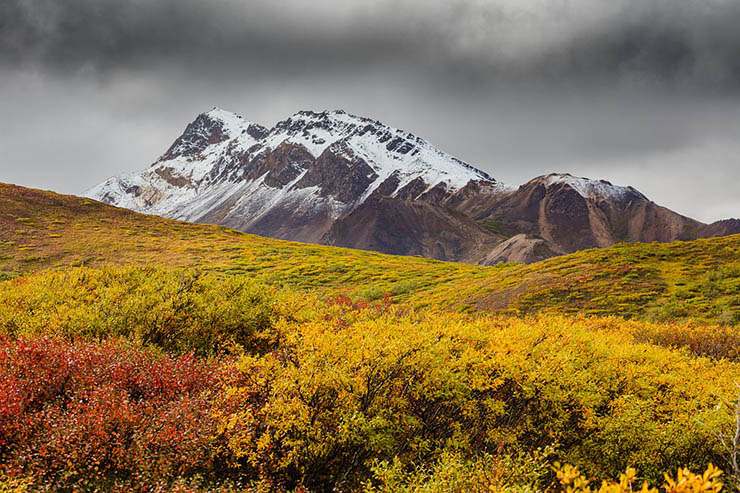
Like gold
During the gold rush, gold miners experienced problems due to a lack of food, especially vegetables. The vitamins contained in vegetables helped prevent scurvy, a terrible disease. Potatoes in Alaska were literally sold for their weight in gold back then.
Natural disasters in Alaska
The most impressive natural disasters often occur here precisely. They are not widely known usually, because they don’t cause significant damage due to the low population density. However, the second strongest tremor in the history of observations was recorded in Alaska! Also, it was here that the world’s highest tsunami happened, when a wave caused by a glacier that collapsed into the lake hit the shore at an altitude of more than 300 feet (~90 meters). This happened in 1958 in Lituya bay. Unfortunately, this tsunami killed 5 fishermen who were fishing in the bay that day.
Facts about the Alaska state capitol
The state capital Juneau officially covers an area of 3,254 sq miles (8,429 sq km). This makes it one of the largest cities in the world! But in fact, only about 32,000 people live in Juneau, and 99% of the “city territory” is the wild. By the way, Sitka town was once named Novo-Arkhangelsk. Founded in 1799, it used to be the capital of the Russian colony in Alaska till this land was sold to the US.
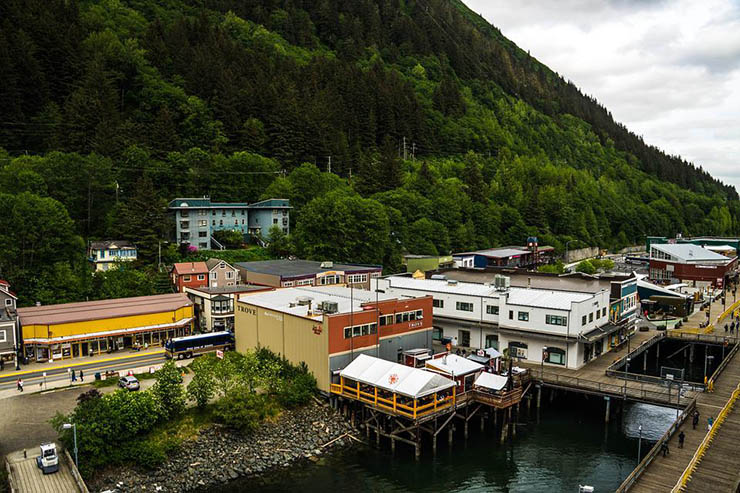
People grow food here now
Agriculture is well-developed here, despite the cold climate. Plants are grown in greenhouses, not in the open ground. In the conditions of the polar day, which lasts up to 3 months in the north of the peninsula, pumpkins have time to grow to monstrous sizes. The world’s largest pumpkin was grown in Alaska.
Capital on the border
Juneau, the capital of Alaska, is the only state capital in the United States located right on the state border. It is located on the US-Canadian border. Juneau, with 33,000 residents, is included in the top 5 least populated state capitals in the United States. The capitals of Montana, Vermont, Kentucky, and Maine have even fewer populations. By the way, Juneau was the first town in Alaska founded after purchasing this land from Russia.
Facts about Alaska glaciers
Glaciers occupy about 5% of the territory of Alaska. Also, there’s Juneau Icefield, a large ice mass from which about 30 glaciers flow, it’s located near the state capital. However, many glaciers in Alaska are retreating due to global warming. The largest one among them is Bering Glacier, it’s also the largest glacier in North America. The Muldrow Glacier is the fastest, its speed is ~100 times higher than typical glacier speed.
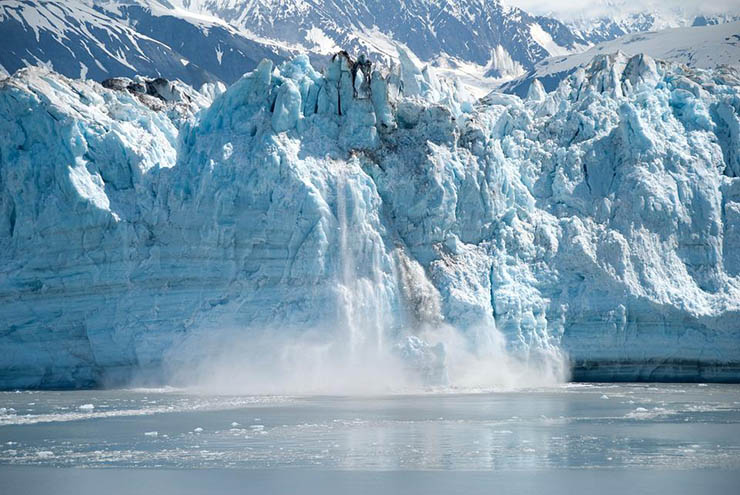
Facts about Alaska’s climate
Contrary to popular belief, not all of Alaska is cold. On the Pacific coast of the peninsula, the climate is temperate and relatively mild. In other areas, it is Arctic and subarctic continental, with severe winters. The lowest temperature here is -80 °F (-62.2 °C) in Prospect Creek on January 23, 1971. Alaska state also holds the record for the lowest temperature in the US for every month except September and October.
Living at the edge of the world
In winter, some towns here have a connection with the mainland by air only. Coastal areas of the sea freeze and thousands of icebergs make navigation impossible. It’s impossible to lay a railway or asphalt road here everywhere because of the rocky terrain. Also, it wouldn’t be possible to clean snow out of these roads constantly.
Facts about Alaska animals
This peninsula is home to some of the largest populations of native and undisturbed wildlife in the United States. There are a lot of grizzly bears here because they feed on the world’s largest sockeye salmon, which occur here in large part because many of the peninsula’s large lakes are an important element in their life cycle. There are no lizards, freshwater turtles, or snakes in Alaska. The only reptiles here are sea turtles.
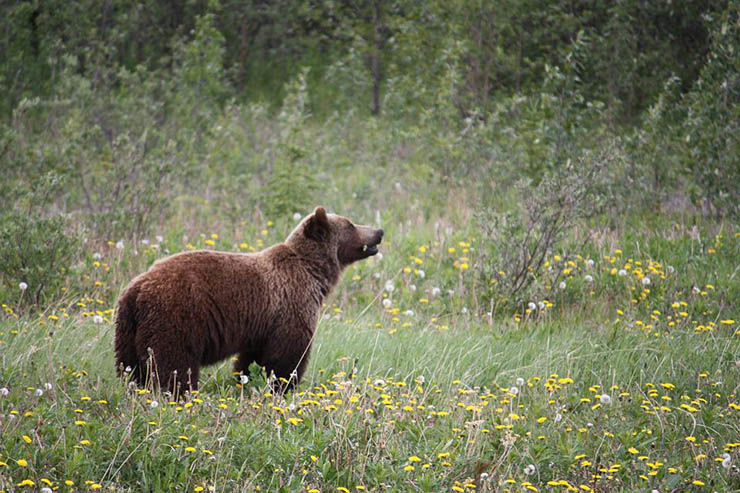
Facts about the Alaska flag
The flag of Alaska was created by 14-years old Benny Benson, a local boy of American-Swedish-Alutiiq-Russian origin. Interesting fact: Benson won a contest to design a flag of the Territory of Alaska in 1927, many years before this territory became a US state which happened in 1959. The Alaska flag features a field of blue with 7 small gold stars in the shape of the Big Dipper and one large gold star in the upper right.
Facts about the Alaska state’s bird
The Alaska state bird is the Willow ptarmigan. These birds also inhabit Northern Europe, the UK, and the tundra on Russian territory. Some people like to joke that the mosquito is the state bird of Alaska though because there are literally billions of them.
Facts about the Alaska earthquake 1964
The Great Alaska Earthquake ыекгд at 5:36 p.m. local time on March 27, 1964. The earthquake lasted more than four minutes, triggering several deadly tsunamis and landslides. The earthquake also contributed to geology, as it showed that oceanic plates are under the continents. Of the 131 people killed during the earthquake, 119 died in tsunamis. After this tragedy, locals made a decision to move several towns and villages to safer ground.
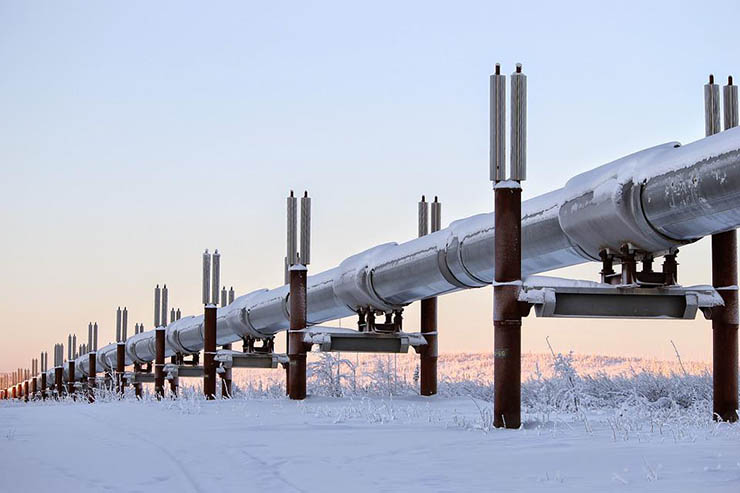
Fun facts about Alaska
There are hummingbirds here! There are hundreds of species of these birds in the world, and some of them tolerate the cold quite well. They live in the south of the state. The Alaskan lands are separated from other states by the territory of Canada. Also, among all the US states, only Alaska and Hawaii don’t have a land border with other states.
The highest US peak
Mount Denali, also known as Mount McKinley, is the highest peak not only in the US but in North America as well. It elevates 20,310 feet (6,190 m)! Mount Denali is the 3rd most isolated peak on Earth (after Everest and Aconcagua). The first successful ascent to Mount Denali was achieved in 1913. Besides, there are lots of other mountains here, and 61 of them have an elevation of more than 10,000 feet (~3000 m).
Close to Russia
The distance between Alaska and Russia (Chukotka peninsula) is about 55 miles only (88.5 km). The water body separating these two countries is the Bering Strait. By the way, you can really see Russia from Alaska! But you’ll have to go to Little Diomede island in the Bering Strait. It’s located only 2.5 miles away from the Big Diomede island which belongs to Russia.
